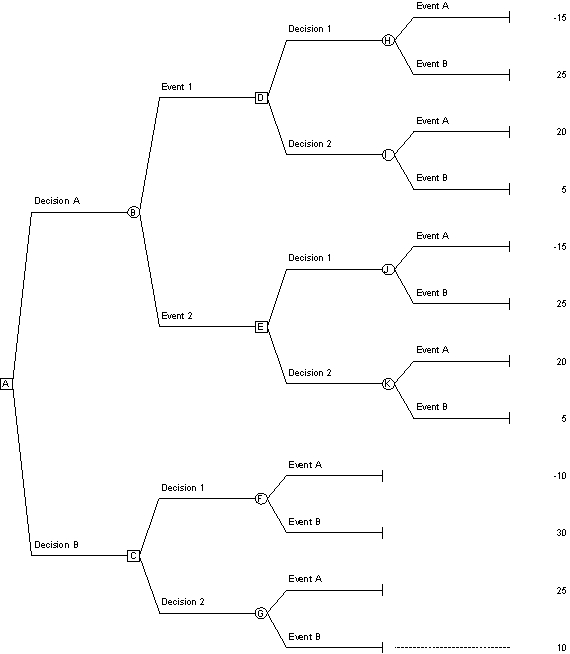Multiple Choice
Heading: Analyzing Risky Decisions
**Reference: Use the decision tree along with the given probabilities to answer the next six questions
Probability Event A = 30% Probability Event B = 70%
Probability Event 1 = 58% Probability Event 2 = 42%
Probability of Event A given that Event 1 occurs = 16%
Probability of Event B given that Event 1 occurs = 84%
Probability of Event A given that Event 2 occurs = 50%
Probability of Event B given that Event 2 occurs = 50%

-A decision tree is:
A) a diagram that describes the options available to a decision marker as well as the certain events that can occur at each point in time.
B) a diagram that helps the observer calculate the expected value, variance and standard deviation of a probability distribution.
C) not applicable to making decisions under conditions of uncertainty.
D) a diagram that describes the options available to a decision marker as well as the risky events that can occur at each point in time.
Correct Answer:

Verified
Correct Answer:
Verified
Q59: A decision maker can be described with
Q60: A decision maker can be described with
Q61: A risk-neutral decision maker will always choose
Q62: An insurance company that sells fairly-priced insurance
Q63: Suppose a decision maker has a
Q65: The expected utility of a lottery is
Q66: Which of the following statements is correct
Q67: The sum of the probabilities of all
Q68: A risk-loving decision maker will choose the
Q69: Consider four lotteries, A, B, C, and